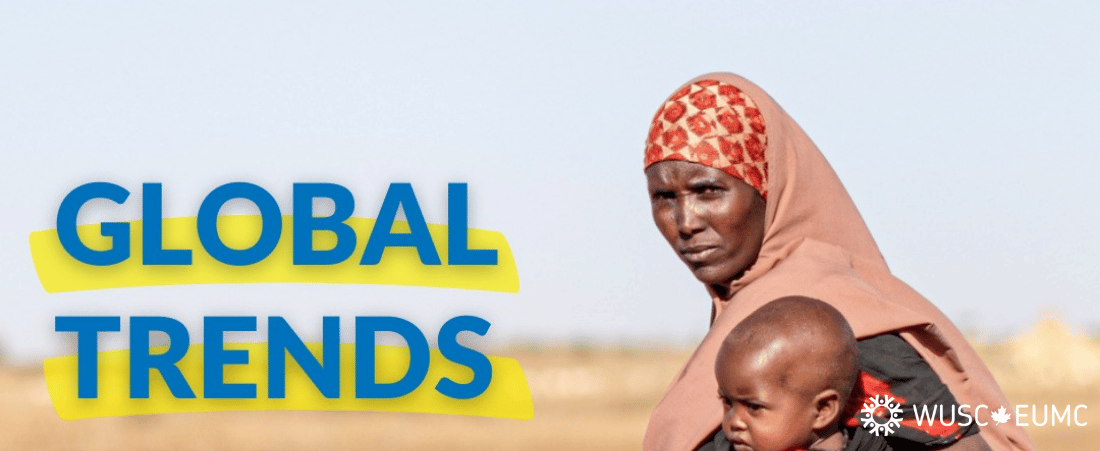
5 Takeaways from the 2021 UNHCR Global Trends Report
As part of their World Refugee Day campaign, UNHCR released their latest Global Trends report on the state of forced displacement around the world. Every year, UNHCR includes an analysis on data related to forced displacement, including the latest number of refugees, asylum seekers, stateless, and internally displaced people worldwide. Here are our five takeaways from the 2021 UNHCR Global Trends report:
1. Global displacement hit a new record.
UNHCR’s new report shows record levels of forced displacement. At the end of 2021, 89.3 million people were forced to flee due to conflict, violence, and persecution around the world. Today, that number has surpassed 100 million, an alarming new milestone.
One in 78 people on earth is displaced. The increase in forced displacement is largely due to new and ongoing conflicts and humanitarian crises in places like Afghanistan, Syria, Democratic Republic of the Congo, and South Sudan.
2. Women and children continue to be disproportionately affected by displacement.
Women and children are overrepresented in the global refugee crisis. Children under 18 account for 41% of the refugee population. Between 2018 and 2021, over 1.5 million children were born as refugees, according to UNHCR. Women and girls represent 48% of forcibly displaced people worldwide.
3. Climate change is predicted to drive future displacements.
Climate change is affecting communities across the globe, many of which are not able to deal with its consequences. In the report, it is predicted that by 2050, more than 200 million people could be forced to move away from their homes due to an increase in extreme weather events like storms and droughts. Climate action is needed to adapt and mitigate against the risks of displacement in the context of climate change.
4. Canada resettled more refugees than any other country in the world.
The report highlights that Canada is a global leader in refugee resettlement. In 2021, Canada welcomed 20,400 refugees, twice as much as the 9,200 refugees resettled in the previous year.
Programs like HIRES and our long-standing Student Refugee Program are just a few examples of how individual Canadians are contributing toward Canada’s resettlement targets. Read on to find out more about these unique programs.
5. We must act now to stop this rising trend of displacement.
Lasting solutions continue to be urgently needed to support forcibly displaced people and help them rebuild their lives. With over 100 million people affected by forced displacement worldwide, it is important now more than ever to welcome people seeking safety. Together let’s stand #WithRefugees.
How WUSC is supporting refugees through our programming
About HIRES: Through our employment-linked sponsorship program, WUSC worked with Camosun College and leaders in the hospitality sector to provide opportunities for young refugees to work and thrive in Canada. This solution is helping to address labour needs in British Columbia and bringing a positive impact to hospitality industry culture, our workplaces, and our communities.
About the Student Refugee Program: Since 1978, the Student Refugee Program has given life-changing opportunities to refugees to continue their education on Canadian post-secondary campuses. The initiative has supported thousands of students over the years and helped them to create better futures for themselves and their families. Learn more about how you can support the Student Refugee Program.
WUSC works to create a better world for all young people. To learn more, start here or subscribe to get highlights straight to your inbox. Interested in volunteering internationally? View our current opportunities. Looking for a new career opportunity? Check out our current job openings. Or show your support for our cause by making a donation.
